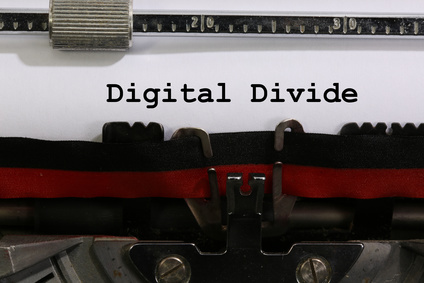In libraries, we’ve been aware of the term “digital divide” for quite some time. Traditionally, it has meant the difference between technology “haves” and “have-nots. “While it hasn’t gone away, there is a lot of discussion about it right now, and even some possible changing of what it means (see the NY Times article, below). We’ve got a roundup of some of the most recent news about this ongoing issue that’s sure to make one think.
- How the ‘digital divide’ is holding the U.S. economy back [Venture Beat] “According to Deloitte, every day that a person is not connected to the internet, America loses $2.16 of potential economic activity, which means that the digital divide currently costs our country over $130 million a day in economic activity.”
- America’s Real Digital Divide [NY Times] “But there’s more to the problem. If you think middle-class children are being harmed by too much screen time, just consider how much greater the damage is to minority and disadvantaged kids, who spend much more time in front of screens.”
- GRAPHIC: America’s digital divide, in 2 maps [The Agenda] “The divide between America’s haves and have nots is increasingly marked by technology. A broadband connection is a portal to jobs, to education, to consumer goods, to information and to other people. Yet huge swaths of the United States are still unconnected, particularly in rural areas. “
- Washington’s next big tech battle: closing the country’s digital divide [Recode] “The bid to boost broadband is expected to become a small but critical component of infrastructure reform, a still-evolving proposal that could set aside $200 billion in federal funds to upgrade the guts of the United States — including aging roads, bridges and tunnels.”
From the Ohio Web Library:
- Poor Students Face Digital Divide in How Teachers Learn to Use Tech. (Herold, B. (2017). Poor Students Face Digital Divide in How Teachers Learn to Use Tech. Education Digest, 83(3), 16. )
- Counterpoint: Tablets and Laptops in School Increase the Digital Divide in Learning (Counterpoint: Tablets and Laptops in School Increase the Digital Divide in Learning. (2017). Points of View: Tablets & Laptops in Schools, 1. )
- California leads in closing the digital divide (California leads in closing the digital divide. (2017). Telecomworldwire (M2), )


